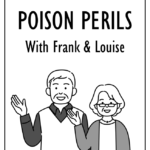What is lead?
Lead is a naturally occurring poisonous metal. Lead used to be an ingredient in paint. Lead paint was widely used in homes built before 1950, and continued to be used in some houses until 1978, when it was banned for consumer use.
Some fishing and hunting products are made from lead, such as sinkers, pellets and other types of ammunition. Certain other types of products, especially ones made overseas, may also contain lead, including pottery, jewelry, toys, medications and herbal preparations, cosmetics, spice mixtures, and candies.
Lead can be harmful if you swallow it, breathe in fumes from heating it, or inhale lead dust. Lead is most harmful to young children and unborn babies.
Lead dust and contaminated soil
Lead dust and contaminated soil are the most common sources of lead poisoning in children.
When lead paint cracks and peels, it makes lead chips and lead dust. Lead dust contains tiny bits of lead that you cannot see. If you have lead dust in your home, children may get it on their hands or toys. They can swallow the lead dust when they put their hands or toys in their mouths.
Contaminated soil is more common in urban areas. Lead may get in the soil from exterior lead paint or industrial sources. Children who play outdoors may get this contaminated soil on their hands and in their mouths.
Adults can breathe in lead dust if they work with old paint or other things with lead. Removing old paint from homes is a common way that adults inhale lead.





